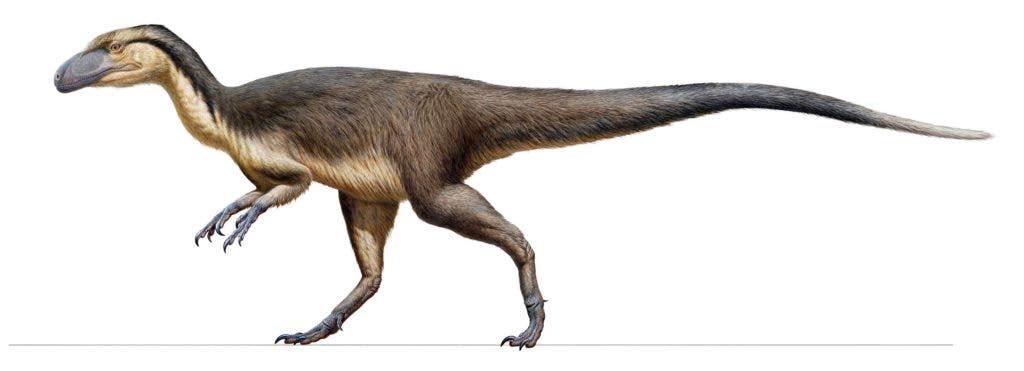A treasure trove of fossilized dinosaur and bird feathers has been recovered in Australia. In ages long past, however, these animals lived beyond the southern polar circle.

The finding is particularly exciting as feathered dinosaur fossils, while definitely famous, are relatively rare and found in few locations worldwide. Fossils from Southern Hemisphere originating from feathered dinosaurs are doubly so and have mainly been limited to isolated instances thus far. The finding showcases the unexpected diversity of proto-feathers (early, hair-tuft-like feathers) from meat-eating dinosaurs, and of the earliest feathers used for flight.
Dinos of a feather
“Dinosaur skeletons and even the fragile bones of early birds have been found at ancient high-latitudes before. Yet, to date, no directly attributable integumentary remains have been discovered to show that dinosaurs used feathers to survive in extreme polar habitats,” said Dr. Benjamin Kear from Uppsala University in Sweden, a leading author on the study.
The Australian cache includes 10 fossil feathers, which were entombed in the fine muddy sediment on the bottom of a shallow lake. These fossils represent tufted hair-like ‘proto-feathers’ from meat-eating dinosaurs, together with a downy body and wing feathers from primitive birds that would have been used for flight.
The lake, today in Koonwarra Fish Beds Geological Reserve heritage site some 145 km southeast of Melbourne in Victoria, Australia, was very close to the unique environment of the South Pole during the dinosaurs’ time.
“These Australian fossil feathers are therefore highly significant because they came from dinosaurs and small birds that were living in a seasonally very cold environment with months of polar darkness every year,” said Dr. Thomas Rich of the Melbourne Museum in Australia, who has led numerous expeditions to the Koonwarra locality.
“Our study is thus the first to comprehensively document these remains, which include new specimens that were examined using cutting-edge technologies.”
The team used several microscopic and spectroscopic techniques to analyze the fossil feathers, which they say were preserved in “incredible” detail. Much like feathers today, the fossils have tiny filament-like structures that ‘zip’ the feather’s vanes together during flight. However, unlike modern feathers (which have interlocking structures called ‘barbs’ and ‘barbules’), most of the proto-feathers (seen on smaller dinosaurs) have a very simplified structure. These feathers were likely used for insulation, not flight.
“The discovery of ‘proto-feathers’ at Koonwarra therefore suggests that fluffy feather coats might have helped small dinosaurs keep warm in ancient polar habitats,” said Dr. Martin Kundrát, of Pavol Jozef Safarik University in Slovakia, a leading author on the study.
The team was also able to recover possible remains of melanosomes, the cellular structures that contain color pigments. The feathers themselves likely were a uniformly dark color, with traces across and as distinct bands, according to the team. The dark coloring assisted in camouflage and/or heat absorbance in cold polar climates, while the patterns likely aided as a means of visual communication.
Some of the fossil feathers found at Koonwarra are on display in the ‘600 Million Years’ exhibition at the Melbourne Museum in Australia.
The paper “A polar dinosaur feather assemblage from Australia” has been published in the journal Gondwana Research.






